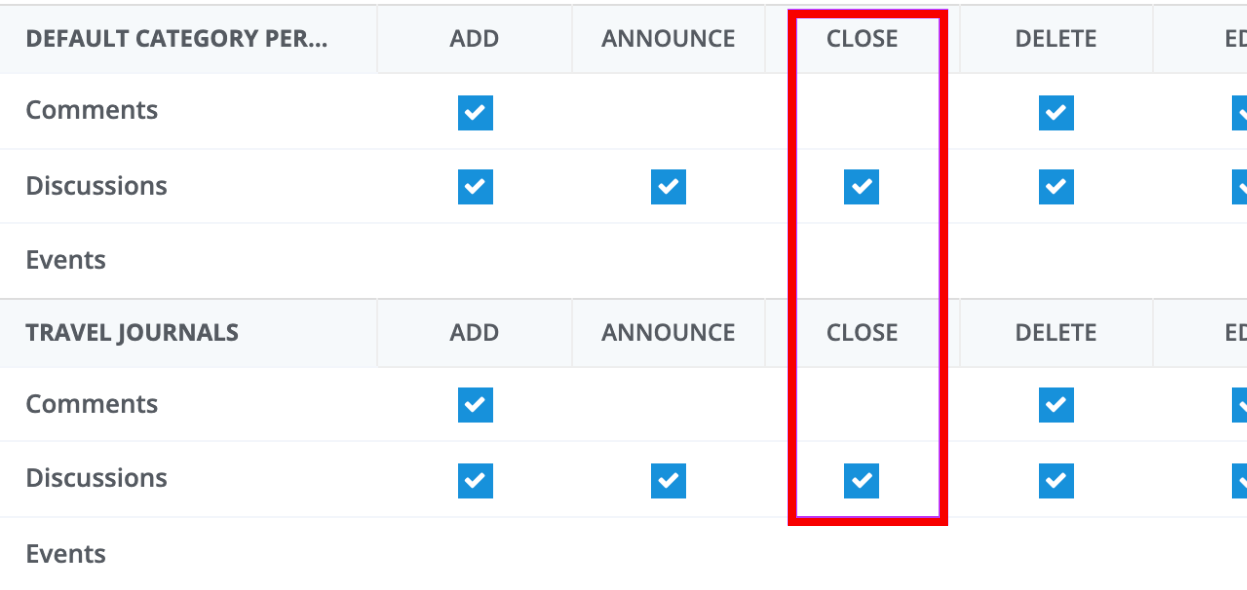Closing a post doesn't mean it's removed from your community or can't be viewed; it means users can no longer add comments.
Typical use-cases for closing a post include:
- An existing post is out of date and you want to direct users (and therefore engagement) to an updated one.
- You simply don't want comments enabled for specific posts.
Who can close posts?
The ability to close posts is controlled by a permission that should be restricted to a select few users Roles, such as Administrators and Moderators.
There are two permissions that can be given to fit your needs:
- Permission to close all posts, regardless of author: A Role requires the
Default Category Permissions > Discussions > Close permission or the Close permission for a particular Category.

- Permission to close posts which they have authored: A Role requires the
Vanilla > Discussions > Closeown permission.

Close posts
You can close posts in one of two ways:
- close a single post
- bulk-close multiple posts
Let's walk through how to do both.
Close a single post
- Navigate to a post.
- Click the ellipsis (...) menu and select Close.

Bulk-close multiple posts
- Navigate to the Recent Posts page.
- Click to check the boxes for the posts you want to close.
- In the popup menu at the bottom of the screen, click Close.
- In the confirmation popup, click Close.

What happens after closing a post?
NOTE: Users who can close posts can also comment on closed posts.
A post closure is indicated in two areas:
- On the Recent Posts and Categories pages:

- On the post's page itself (the Comment box is not available):

Reopen a closed post
Those with permissions to close a post can also reopen one at any time.
- Navigate to a closed post.
- Click the ellipsis (...) menu and select Reopen.

Additional resources
Click the link below to access a video expanding on what you learned in this article.